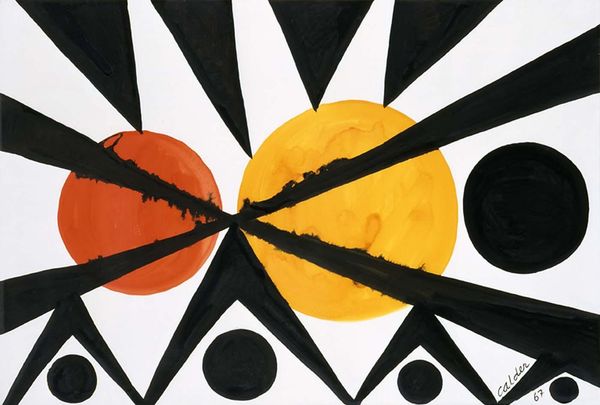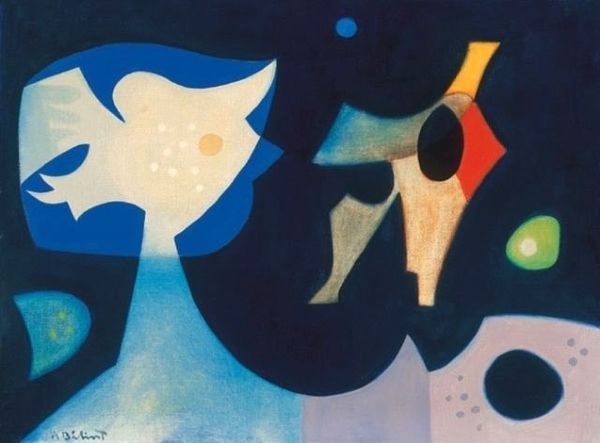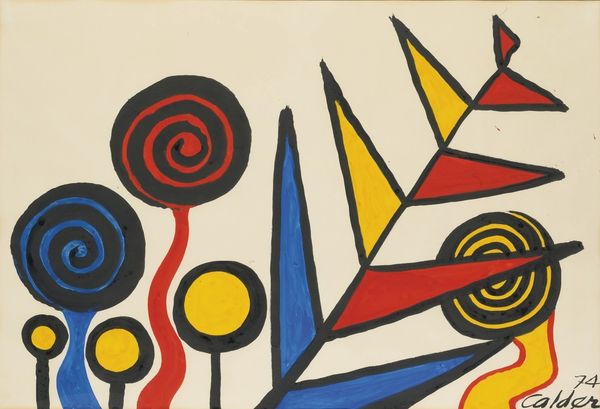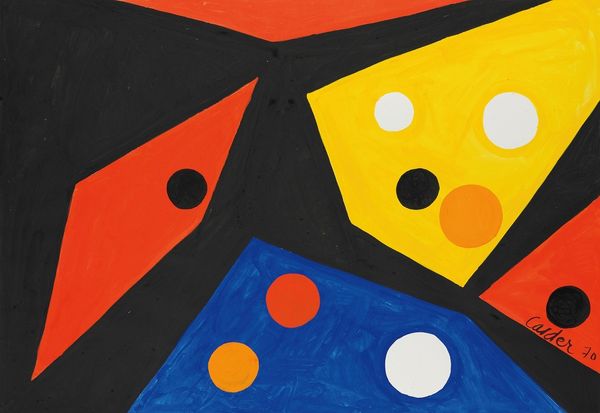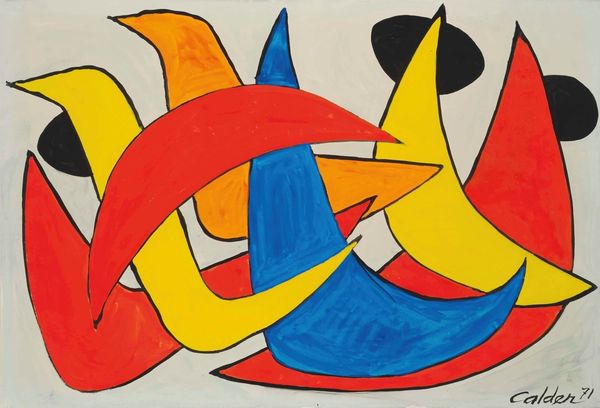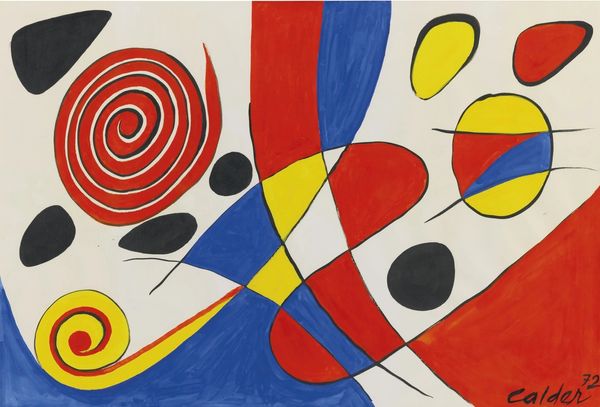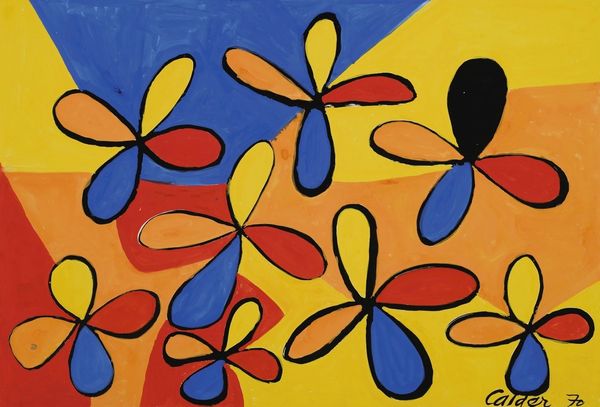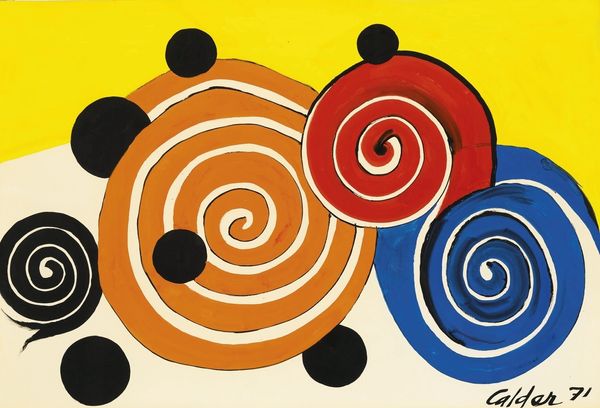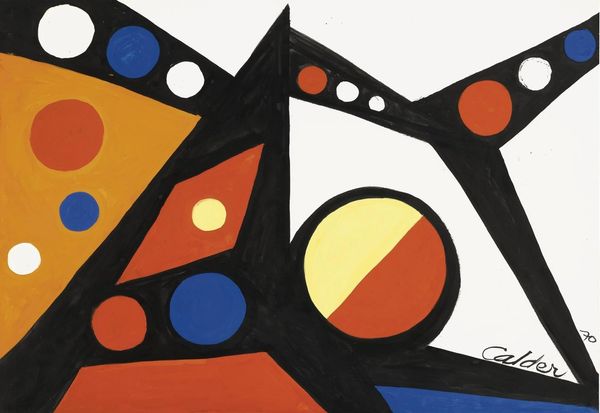
acrylic-paint
#
abstract-expressionism
#
abstract expressionism
#
acrylic-paint
#
abstract
#
form
#
acrylic on canvas
#
geometric
#
abstraction
#
line
Copyright: Modern Artists: Artvee
Curator: Alexander Calder's "Seven Black, Red and Blue" from 1947 presents us with a dynamic composition executed in acrylic paint on canvas. Editor: Immediately, the high-contrast palette strikes me. It feels playful but also slightly unsettling – those bold geometric shapes suspended against the warm, almost fiery background. Curator: It's important to situate Calder within the context of post-war abstraction. While he's perhaps most well-known for his mobiles, works like this, done after his service in the Navy, demonstrate a concern with translating the kinetic into a static, two-dimensional format. The biomorphic forms, and use of color can be read alongside anxieties related to shifting geopolitical forces of the time. Editor: Interesting, especially given the prominence of black. It’s not merely a color; it's almost a looming presence here. Then there's the constellation-like arrangement of forms that makes me think about the atomic age and all of its societal and cultural implications. Does it signify impending doom or boundless freedom? Curator: Calder often resisted overtly symbolic interpretations, emphasizing instead the inherent properties of form and color. He sought to democratize sculpture by bringing a sense of levity to modern abstraction; these kinds of pieces also show his work on set designs and show that he truly understood that art goes beyond an individual frame to an audience at large. Editor: Still, those forms, particularly the sharp, pointed shapes and the implied movement, feel far from innocent. They make me wonder about the performative role of color and shape in reflecting post-war sentiments of optimism and disillusionment, almost simultaneously. It’s a dance between chaos and control. Curator: Right, it brings forward how art could affect large groups, both on canvas and on the set of a production. I appreciate how your reading of the interplay pushes against any notion of a purely formalist project. Calder was, after all, deeply engaged with the social world around him. Editor: Seeing his work now and layering a post-structural perspective only amplifies those underlying tensions, even as we enjoy the apparent simplicity. I feel that, at the heart of Calder’s artistry, his images really reflect an overall global sentiment of turmoil.
Comments
No comments
Be the first to comment and join the conversation on the ultimate creative platform.
